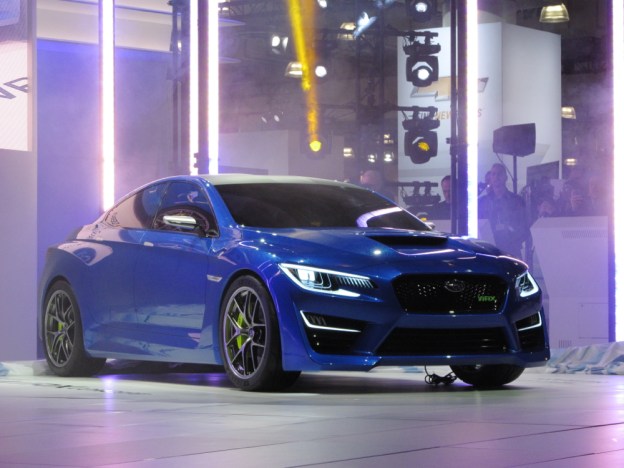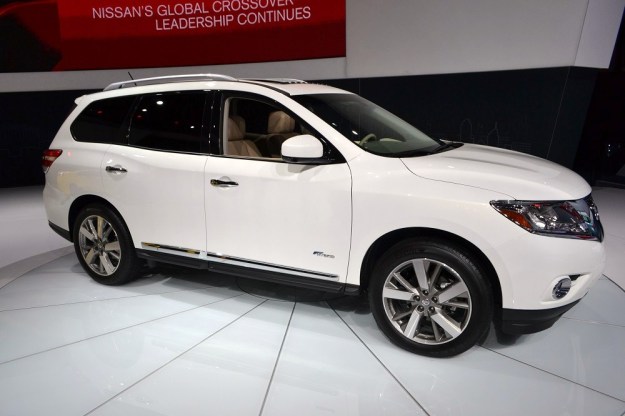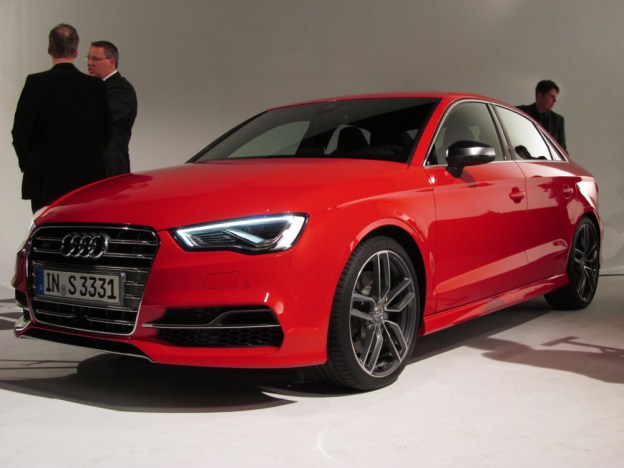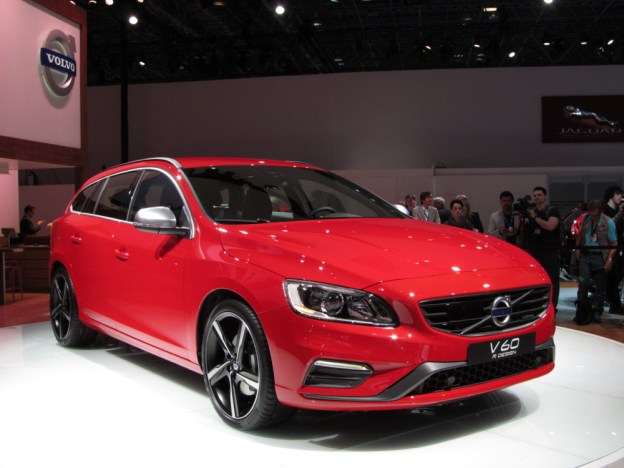 After two days walking the floor of the Jacob K. Javits Convention Center, we saw all there was to see in steel, aluminum, and simulated carbon fiber trim. From sports cars to hybrids, the 2013 New York Auto Show was, to say the least, interesting.
After two days walking the floor of the Jacob K. Javits Convention Center, we saw all there was to see in steel, aluminum, and simulated carbon fiber trim. From sports cars to hybrids, the 2013 New York Auto Show was, to say the least, interesting.
Here’s what we observed about the direction the auto industry is taking and what it means for your future car purchases.
 Hardcore performance models
Hardcore performance models
Despite carmakers’ efforts to appear greener and comply with impending government regulations, they are still finding time to build special performance versions of their existing models.
Chevrolet unveiled the Camaro Z/28, which was designed specifically for track driving. It has less horsepower than Chevy’s other super-Camaro, the ZL1 (500 hp versus 580 hp), but Chevy says it will lap a track three seconds faster.
In a slightly more expensive corner, Porsche brought out its latest 911 GT3. The 911 is already considered one of the best sports cars of all time, but Porsche decided to up the ante with a specially built 3.8-liter flat-six and a stiffened chassis that the company compares to one of its Cup racers.
Both cars eschew luxury and comfort for performance; air conditioning is optional on the Z/28, for example. If regular sports cars are niche products, these are for the truly dedicated. They may not make sense, but thankfully Chevy and Porsche don’t care.
 Hybrid crossovers
Hybrid crossovers
The first commercially successful green car segment and one of the fastest growing vehicle segments are finally meeting. Nissan unveiled the Pathfinder Hybrid, while its luxury division Infiniti showed the nearly identical QX60 Hybrid. Subaru’s XV Crosstrek Hybrid is more of a compact car in hiking boots than an SUV, but the automotive division of Fuji Heavy Industries has it aimed squarely at the crossover competition.
Making hybrids into crossovers should make them more attractive to the buying public that is going crazy for these utility vehicles, and it will help carmakers comply with CAFE regulations. If hybridization really is the future of motoring, then it will have to include crossovers.
However, a crossover isn’t a streamlined Toyota Prius or Chevy Volt, so the fuel savings probably won’t be as dramatic as in those purpose-built hybrids.
 In luxury, small is the new big
In luxury, small is the new big
Mercedes continued the rollout of its CLA-Class with the CLA45 AMG, while rival Audi unveiled its equally small A3 sedan, along with a sporty S3 variant. BMW showed the Concept Active Tourer, a front-wheel drive plug-in hybrid concept that was also quite trim.
Audi has a history of building small cars based on front-wheel drive platforms, but this is new territory for BMW and Mercedes. There are several benefits to downsizing, including better fuel economy, lower prices, and the potential to attract younger buyers who aren’t as averse to small cars as their parents. These cars are also easier to park.
The Germans are confident that luxury car buyers want smaller cars with the same level of equipment as traditional sedans. We’ll have to see if that holds true once these buyers get behind the wheel.
The CLA, A3, and Concept Active Tourer appear practical, but their small size will probably limit their use as family cars or designated-driver taxis. Nonetheless, they’re still two sedans and a hatchback, so there are better frivolous choices out there. We’ll have to wait and see if the compact luxury car matures from a niche product into a full-on segment.
 Dueling utility vehicles
Dueling utility vehicles
BMW and Volvo each debuted a utility vehicle that’s imported from Europe, but otherwise they’re completely different. The Volvo V60 is a traditional station wagon (although Volvo calls it a “sports wagon”), while the BMW 3 Series Gran Turismo is a high-roofed hatchback with the seating position of an SUV.
BMW says the 3 Series GT combines the sporty chassis of a 3 Series sedan, the utility of a 3 Series wagon, and the high-and-mighty seating position of a crossover. The Volvo is just a wagon. It’s what Volvo does.
Maybe it’s the effect of crossovers, but “wagon” is a dirty word in the car business. Even Volvo itself wavered, importing the SUV-like Cross Country exclusively until now. However, there’s something to be said about a car with a singular purpose.
The BMW’s prestigious badge and righteous 3 Series chassis will probably make it the bigger seller, but we hope Volvo and other manufacturers don’t get discouraged.
 Pragmatism rules
Pragmatism rules
Only two new concept cars debuted at New York this year: the aforementioned BMW Concept Active Tourer and the jaw-dropping Subaru WRX Concept. Instead of these fanciful showpieces, we saw plenty of practical SUVs, sedans, and hatchbacks, and a Honda minivan equipped with a vacuum cleaner.
New York is at the tail end of the American auto show season, so it’s not surprising that there weren’t many new concept car debuts. It’s also good to see the auto industry on its game producing cars that people can actually use.
Still, nothing stokes the imagination like a concept car. Many industries focus on what their products could be, but nobody puts those ideas on display the way the car industry does. Take that WRX: it tells us nothing substantive about the upcoming production model, but can you deny its awesomeness?
Carmakers used to crowd show floors with crazy things like the Cien, a mid-engined Cadillac supercar concept from 2002, or the Ford Nucleon, which was supposed to be powered by a nuclear reactor. Now, most concepts are disguised production cars, or first drafts of works in progress. We’re not advocating radiation poisoning, but we know how entertaining things can get when car designers are really let loose. More “real” concept cars, please.







